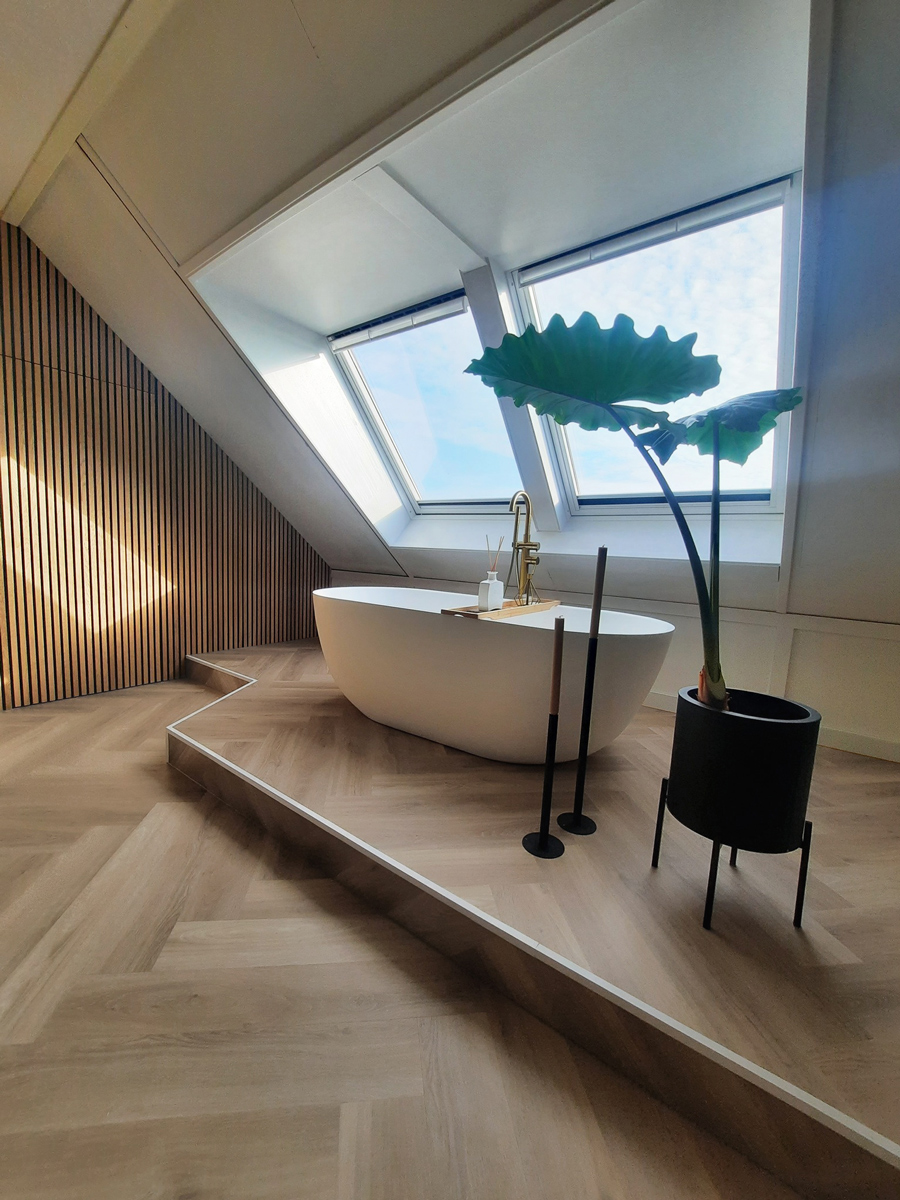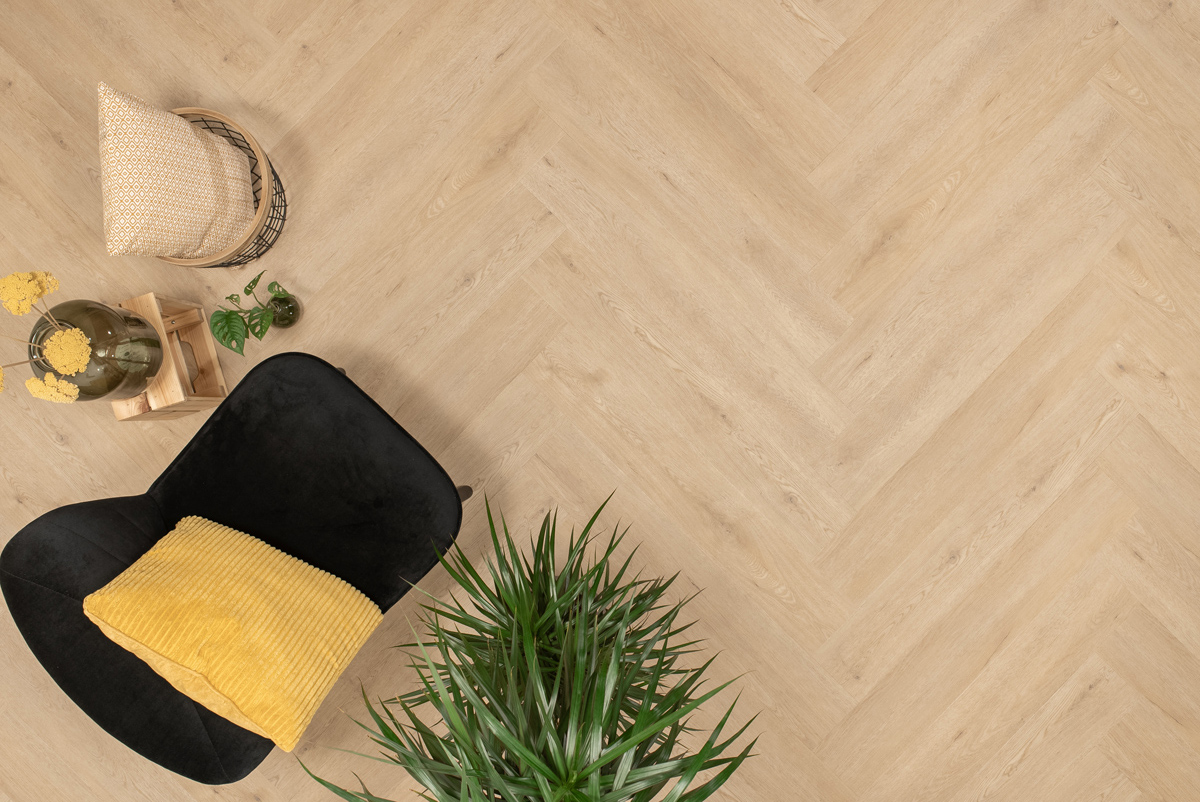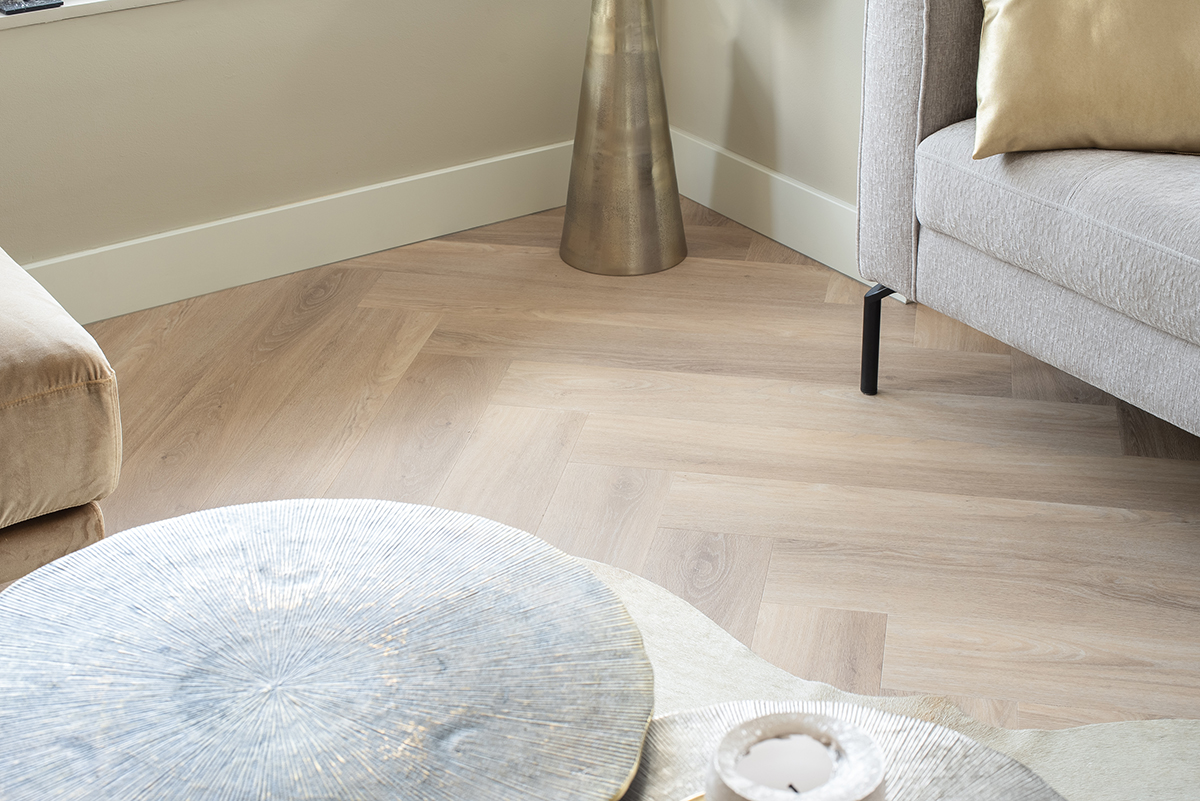When installing a Rigid Click Vinyl floor, it is essential to choose a suitable underlay. The right underlay has a significant impact on the lifespan of your floor. In this blog, we discuss the different types of underlays for Rigid Click Vinyl, such as the loose underlay on a roll, the integrated underlay, and more. Discover all the pros and cons of the different underlays!
Why an Underlay for Rigid Click Vinyl?
It’s important to understand why an underlay is necessary for Rigid Click Vinyl floors. Simply put, the underlay forms the foundation for the floor itself, making it indispensable. Installing a Rigid Click Vinyl floor without an underlay is simply not an option! The right underlay protects the floor. Imagine the pressure on the floor’s joints when you walk, stand, sit, or place something on it. The underlay ensures that the floor can withstand this pressure. This pressure resistance is expressed in kPa values, so always pay attention to the kPa value when choosing an underlay. Read all about it in our blog “Which Underlay for Rigid Click Vinyl?”.
Roll Rigid Click Vinyl Underlay
A popular choice is the loose underlay on a roll. This underlay comes in long rolls that can be easily unrolled and cut to size. The big advantage of this underlay is that it is easy to install, making it ideal for DIY enthusiasts, just like the Rigid Click Vinyl floor itself. After unrolling and cutting to size, you only need to connect the pieces with aluminium tape. Additionally, loose underlays are often made from sound-absorbing materials, which helps to dampen sound vibrations—a nice bonus!
Integrated Underlays
An integrated underlay, as the name suggests, is directly attached to the floorboards. The big advantage of this is that you don’t need to lay a separate underlay, which saves time during installation. One downside of an integrated underlay is that you are dependent on the specifications of the underlay that is already attached to the floor. For example, if your apartment requires a 10 dB noise reduction and the integrated underlay does not have a certification, it may be difficult to meet the requirements.
Additionally, some integrated underlays extend from the underside of the plank to the joint, but not beneath the joint itself. This means there is no underlay under the joint, only on the underside of the plank. With a loose underlay on a roll, the entire surface is covered, including beneath the joint, providing protection even in these vulnerable areas.
Dual Underlays
Dual underlays are often used to bridge larger irregularities in the subfloor. They are especially known for their ability to level and/or insulate. Many roll underlays or integrated underlays are less suitable for correcting large unevenness. However, this doesn’t mean that you should always opt for a dual underlay when facing many irregularities. It is also possible to level the subfloor first and then use a roll underlay, depending on your specific situation.
10 dB Underlays for Rigid Click Vinyl
We briefly mentioned this topic with the integrated underlays. In many apartment buildings, there is often a 10 dB requirement for sound insulation to the neighbours. Fortunately, our Floer Rigid Click PVC underlay has this certification. So, if you need to meet this requirement, for example, when laying your beautiful Herringbone Click Vinyl floor, the Floer underlay is a great choice!
In short, we always recommend using the Floer Click PVC underlay in combination with Floer Rigid Click Vinyl floors. It might take a few extra minutes to lay the underlay, but you’ll enjoy it for years to come. You’ll be assured of a floor with an excellent kPa value, 10 dB impact sound reduction, and compatibility with underfloor heating.






